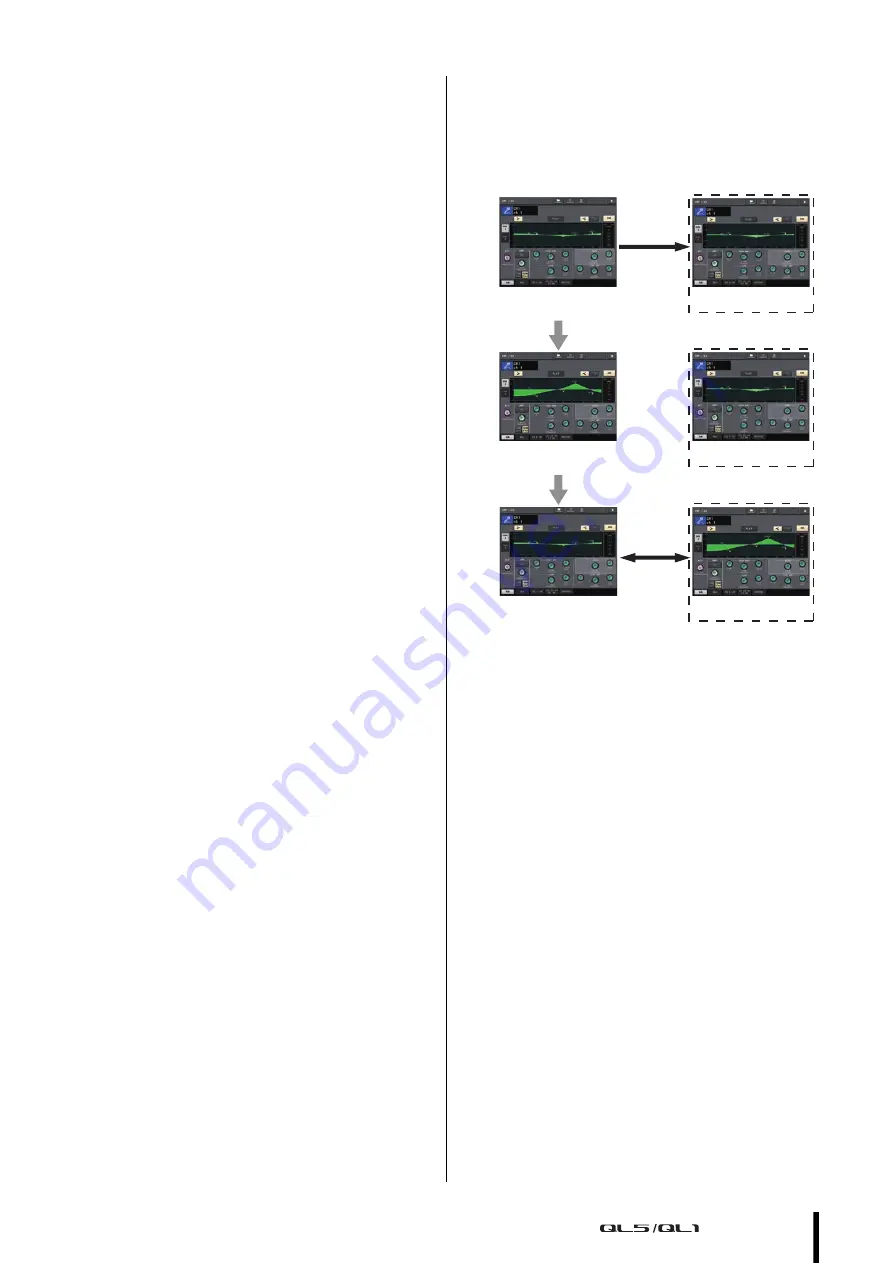
Comparing two sets of settings
Owner’s Manual
29
Comparing two sets of
settings
You can use the COMPARE button to switch between
the settings copied to the buffer memory and the settings
of the currently selected channel (EQ/dynamics) or rack
(GEQ/effect/premium rack).
This is convenient when you want to copy an interim
result of your editing, and then compare it with
subsequent edits.
1.
Access a window that contains tool buttons.
2.
Select a channel (EQ/dynamics) or rack
(GEQ/effect/premium rack).
3.
Press the COPY button to copy the current
settings to the buffer memory.
This will be the first version of your settings.
NOTE
Be aware that if you copy other settings before you
compare, the buffer memory will be overwritten.
4.
Edit the settings of the currently selected
channel (EQ/dynamics) or rack
(GEQ/effect/premium rack).
This will be the second version of your settings.
NOTE
After you copy the first set of settings to the buffer memory,
you can initialize the channel or rack and edit the second
set of settings from an initialized (blank slate) state if
desired.
5.
To compare the first set of settings with the
current settings (the second set), press the
COMPARE button.
You will return to the first version of your settings.
At this time, the second version of your settings will
be copied to buffer memory.
6.
You can press the COMPARE button repeatedly
to compare the first and second sets of settings.
Each time you press the COMPARE button, the
current settings will be exchanged with the settings
copied to the buffer memory. Unlike the Paste
operation, this operation lets you return to the
previous settings at any time as long as the buffer
memory has not been overwritten.
NOTE
•
The settings copied to buffer memory can also be used by
the Paste operation.
•
If you operate the tool buttons for a rack in which
Flex15GEQ (of the two types of GEQ) is selected, the
rack’s A and B settings will be individually exchanged with
the buffer memory.
COPY
COMPARE
First set
First set
Buffer memory
Edit the settings
(second set)
First set
First set
Second set
Buffer memory
Buffer memory
















































